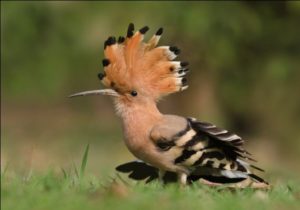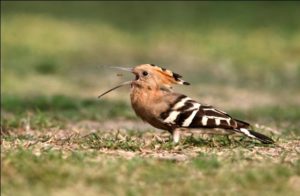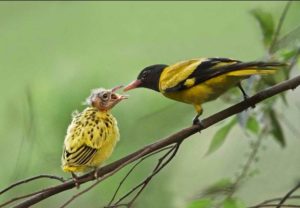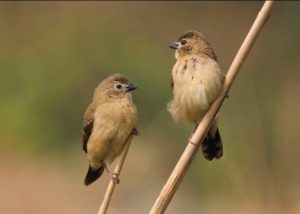PHOTOGRAPHING WINGED GUESTS – My Field Experience By Shakyasom Majumder
As a young kid, I have always praised photographs of colourful birds in pages of books and magazines. But, being able to be present amidst the real action has been a terrific experience for me over the past few years. Frankly speaking, bird photography can get extremely frustrating at times. Birds usually never seem to sit still and on trying to get closer, they fly away. Although it is quite arduous, bird photography is equally rewarding too.
MY APPROACH –
Personally, I prefer to get as close as possible to the real action. Getting close has its advantages and usually gives detailed images of birds. However, getting really close to these flighty creatures is no small task and is a skill that needs some time to develop. Again, one needs to be extremely patient and equally alert throughout. Many great photos just happen at the most random moments when we are not expecting anything.

Aperture- F/8, Shutter speed -1/2000 sec,
Focal Length – 420mm, IS0 – 500, Metering –
Centre weighted average, EV – (–)1.3 Step ,
Focus Mode –AF-C , Single Point
In this type of photography, there is a thin line of difference between getting the shot right and missing it completely. Keeping that in mind, I usually do not rush towards a bird when I spot one. Rather, I keenly focus on its activities for some time and adjust my approach accordingly. It is quite obvious that wearing camouflaging clothes to blend in with the surroundings is a necessity.
For birds which are in search of insects or grains on the ground, I usually crawl very slowly on my chest up to a certain safe distance and then allow them to come towards me. I avoid any sudden movement as that is bound to make them feel my presence. Obviously, this technique has its own limitations and I encounter failures. But, the joy of getting even one perfect shot is inexplicable.

Aperture – F/6.3, Shutter speed – 1/3200 sec
Focal length – 420mm, IS0 – 500, Metering –
Centre weighted average , EV – (–)1.7 Step,
Focus mode – AF-C, Single point
I also put special attention on lighting conditions. Keeping the Sun behind us while photographing birds will give catchlights in their eyes thus making the image more lively.
MY EXPERIENCE –
Being an avid nature lover, I feel immensely lucky to be able to appreciate the moments that I have spent on its lap. From beholding a magnificent common Hoopoe catching larva to a bathing Moore-Hen, the experience has been incredible.

Aperture – F/7.1, Shutter speed – 1/3200 sec,
Focal length – 420mm ,IS0 – 640,
Centre weighted average metering,
EV – (–)1.7 Step,Focus mode – AF-C, Single point
Birds are mostly active during early morning and before sunset. So, these two times present better opportunities for getting the shot right. I have also noticed that juvenile birds are more cooperative than their elder counterparts. During the breeding season, birds have brighter plumage which makes them easier to identify. However, one of the best times to photograph birds is Winter when birds migrate south.

Aperture- F/5.6, Shutter speed – 1/400 sec,
Focal length – 420mm, IS0 – 1250,
Centre weighted average metering, EV – (–)2 Step, Focus mode –
AF-S, Single point

Aperture- F/8, Shutter speed – 1/1600 sec,
Focal length – 300mm, IS0 – 500,
Centre weighted average metering, EV – (–)1 Step, Focus mode –
AF-C, Single point
GADGETS AND SETTINGS –
It is quite easy to say that one needs better camera and lens combinations in this field. However even the best of gadgets do not ensure success either. Gadgets are no doubt important for good results, but paying attention to our own technique is even more vital. One needs to know the workings of his camera thoroughly i.e.; how the focusing system works, proper metering and so on to ensure accurate results.
I had used a NIKON D90 with an AF-S NIKKOR 70-300mm F/4.5-5.6 VR lens for a year and then shifted to a NIKON D7000 + AF-S NIKKOR 300mm F/4 D + AF-S NIKKOR 1.4X TC combination later.
Choice of Aperture – Getting into technical issues, when the birds are very close, proper selection of aperture is going to be extremely vital to get the entire bird into focus (An aperture value of F/7.1 or F/8 is optimum under such circumstances).
Metering – Personally, I use Centre-Weighted Metering with an Exposure Compensation of (-)1.7 or (-)1.3 EV for an appropriately illuminated Average subject to get accurate exposure.
Focusing– Proper understanding of the camera’s focusing system is crucial in getting a properly focused image. Today’s auto focusing cameras have made focusing much easier. For still subjects which have no motion, SINGLE POINT AF-S (SINGLE SERVO AF) is appropriate. In this mode, after pressing the shutter release button halfway, focus gets locked on the subject.
For birds which have motion (and this is the usual case), I use SINGLE POINT or 9 – POINT DYNAMIC AREA AF with CONTINUOUS SERVO AF (AF-C). In this setting, the camera goes on focusing on the subject as long as the shutter release button is pressed halfway down.

For birds in flight, 3-D TRACKING can help a lot as long as there is good contrast between the bird and the background.
Aperture – F/6.3, Shutter speed – 1/4000 sec, Focal length – 300mm , IS0 – 640, EV – (–)1.7 Step , Centre weighted average metering , Focus Mode – AF-C , 3D Tracking
Even with the appropriate equipment and knowledge, the most important thing is to follow birds and their behaviours during different times of a day or different seasons of a year. This will make one more familiar with their behavioural patterns which in turn will make birding easier.